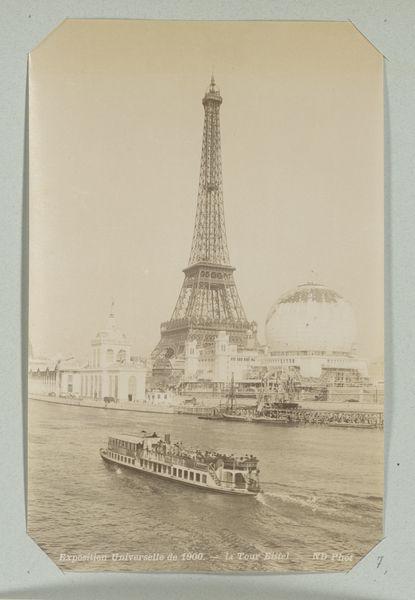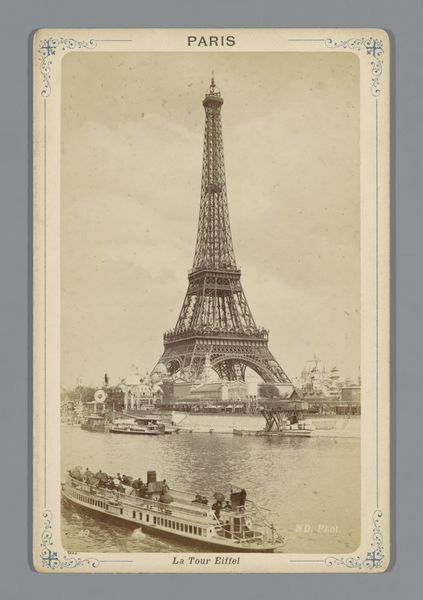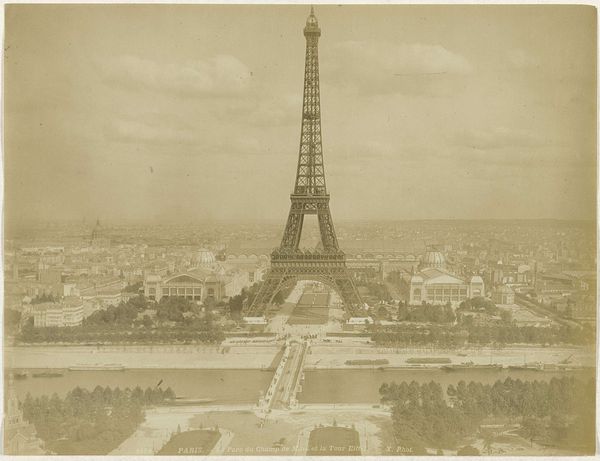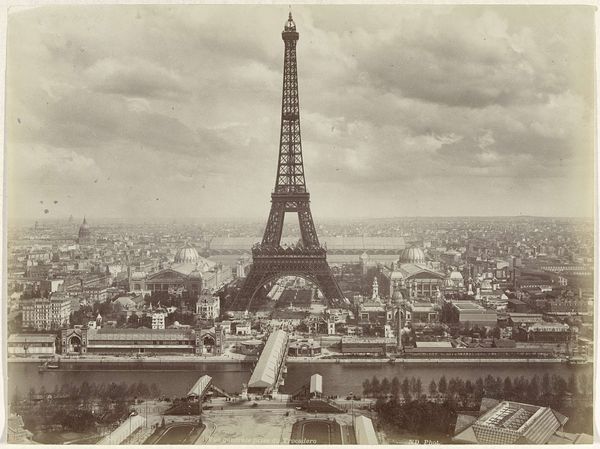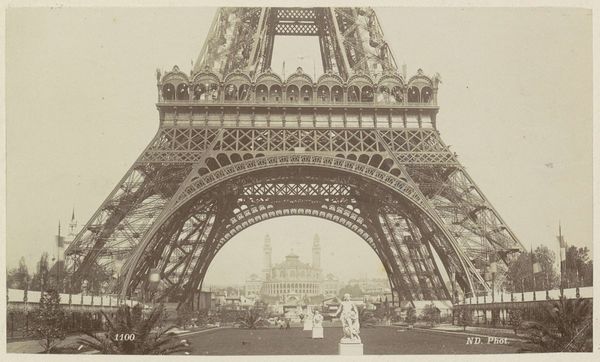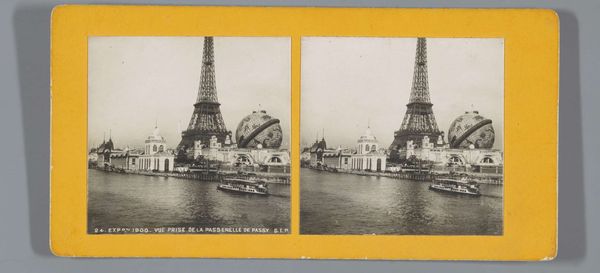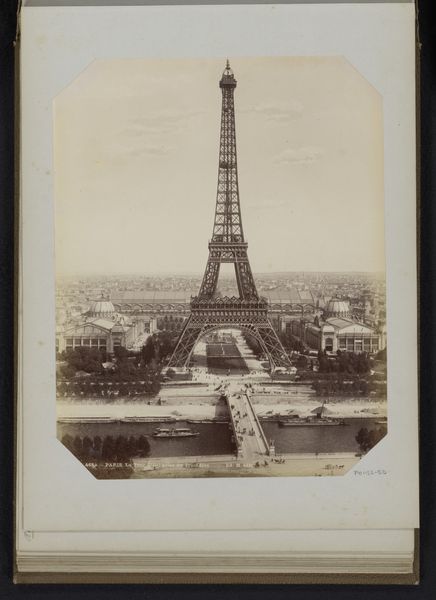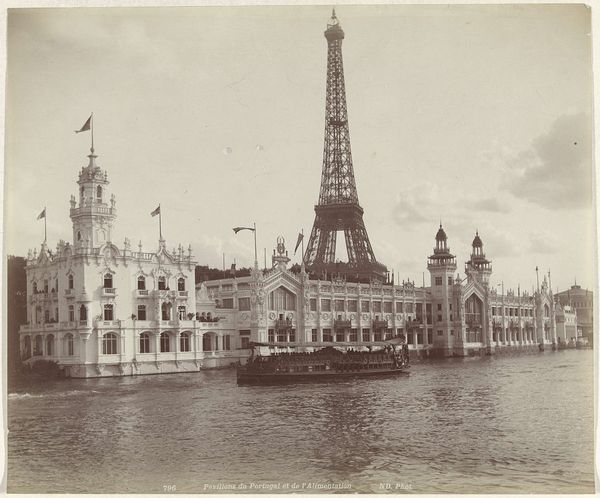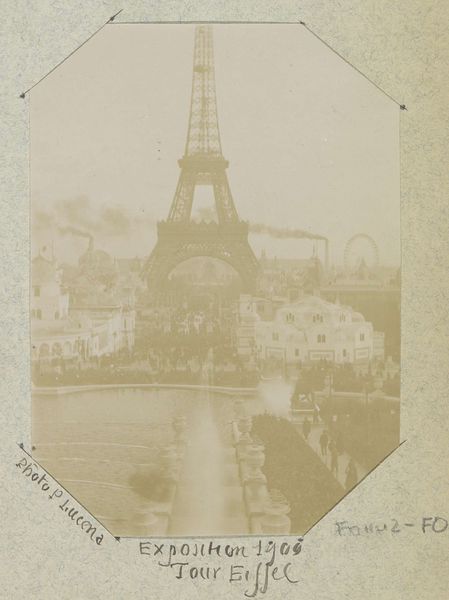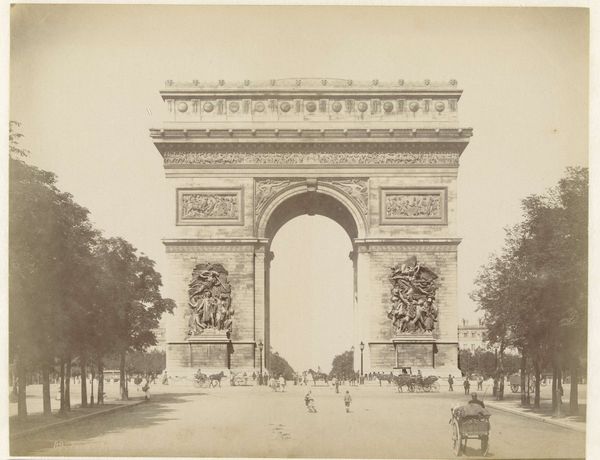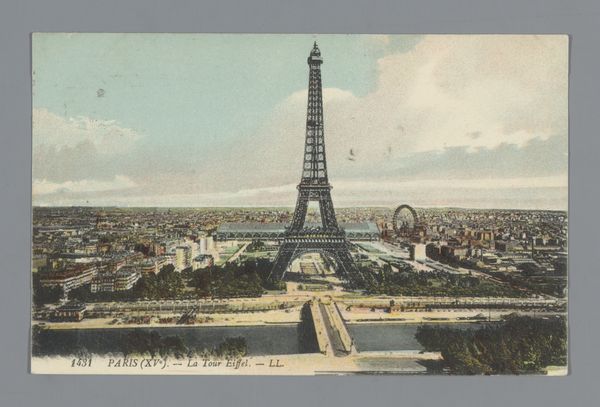
Dimensions: height 184 mm, width 120 mm
Copyright: Rijks Museum: Open Domain
Curator: This photograph, entitled "Eiffeltoren gezien vanaf de Seine, Parijs," captures the Eiffel Tower as seen from the Seine, sometime between 1889 and 1900, and is presented in gelatin-silver print. Editor: The sheer verticality of the tower is striking. The monochrome palette evokes a sense of a bygone era, of monumental construction amidst the bustling city life seen from the river. Curator: Indeed, the photograph utilizes a classic cityscape composition, emphasizing the tower's structure and how its form rises. The river and the buildings along the shoreline provide depth. Consider the strategic placement; the lines create dynamism that directs the eye to its peak. Editor: Though it's beautifully framed, the Tower was deeply unpopular during its initial construction; it symbolized industrialization and the disruption of Paris's historical architectural integrity. Seeing the Tower and the steamer, you realize the extent to which labor movements were demanding fairer working conditions. It feels symbolic of progress, but at what cost? Curator: Well, even focusing solely on the formal elements, you could say there is a fascinating tension between the solidity of the Tower and the relative impermanence suggested by the flowing river and the steamboat. Editor: That's true, yet to view this artwork without acknowledging the social upheaval around the era's construction would be to ignore the narrative behind it. What were they trying to communicate in the context of rapid industrialization? The Tower wasn't simply an artistic piece, it was a declaration of national power. Curator: Fair enough. By analyzing the structural framework, composition, and even the chosen medium, one begins to appreciate the photographer’s ability to document both engineering and early modernity. Editor: And, how early photography can inform contemporary dialogue. It seems relevant now, as our own historical narratives around gender, race, labor, and politics continue to rapidly shift. Curator: Indeed, it’s fascinating how a photograph that looks so straightforward offers so many avenues for exploring both the aesthetic and cultural dimensions. Editor: Absolutely, it makes us rethink historical context and what monuments represent to our shared future.
Comments
No comments
Be the first to comment and join the conversation on the ultimate creative platform.

